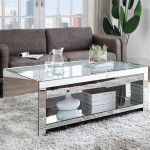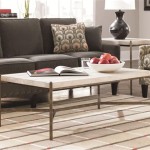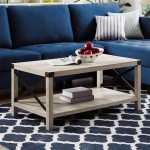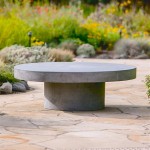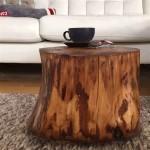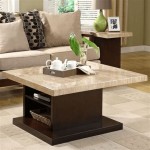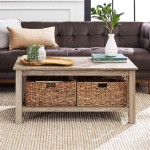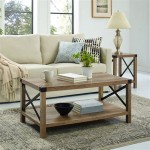Modern Table Design Ideas
Modern table design encompasses a broad spectrum of styles, materials, and functionalities, reflecting contemporary lifestyles and evolving aesthetic preferences. It emphasizes clean lines, minimalism, functionality, and innovative use of materials. This article explores several key trends and design ideas that characterize modern table design, catering to various needs and spaces.
Focus on Minimalism and Clean Lines
A defining characteristic of modern table design is its adherence to minimalist principles. This translates to tables with clean, uncluttered surfaces, geometric shapes, and an absence of excessive ornamentation. The aim is to achieve a sense of simplicity and elegance that seamlessly integrates into modern interiors. Tables often feature straight legs or simple pedestal bases, avoiding intricate carvings or elaborate details.
This minimalist approach extends to the choice of materials. Smooth, untextured surfaces are preferred, showcasing the inherent beauty of the chosen material. Examples include glass tabletops paired with metal legs, solid wood surfaces with a clear finish, or laminate tops with a smooth, matte texture. The focus remains on the form and function of the table rather than decorative embellishments.
Color palettes also contribute to the minimalist aesthetic. Neutral tones such as white, black, gray, and beige are commonly used, allowing the table to blend effortlessly into its surroundings. Accents of color, if used, are typically subtle and restrained, serving to highlight specific design features rather than dominating the overall look. This emphasis on simplicity allows the table to serve its purpose without overwhelming the space.
The minimalist approach is particularly well-suited for smaller spaces, where clutter can easily overwhelm a room. A simple, streamlined table can provide a functional surface without adding visual noise. In larger spaces, minimalist tables can serve as sophisticated focal points, allowing other design elements to take center stage.
Embracing Innovative Materials and Textures
Modern table design is characterized by a willingness to experiment with new and innovative materials. While traditional materials like wood and metal remain popular, designers are increasingly exploring the possibilities of using materials such as concrete, resin, glass, and even recycled plastics. These materials offer unique textures, colors, and performance characteristics that can significantly enhance the aesthetic and functionality of a table.
Concrete, for example, is gaining popularity for its industrial-chic aesthetic and durable nature. Concrete tables often feature a raw, unpolished finish, showcasing the material's inherent texture and character. They can be paired with metal legs or bases for a contrasting visual effect. Resin tables offer a versatile alternative, allowing for the creation of translucent or opaque surfaces in a wide range of colors and patterns. Resin can be molded into various shapes, offering designers greater flexibility in creating unique and eye-catching table designs.
Glass tabletops continue to be a popular choice for modern tables, offering a sleek and sophisticated look. Glass can be clear, frosted, or tinted, and can be paired with a variety of bases, including metal, wood, or even glass. The transparency of glass creates a sense of lightness and airiness, making it an ideal choice for smaller spaces. Recycled plastics are also emerging as a sustainable and eco-friendly option for table design. These materials can be transformed into durable and visually appealing surfaces, often mimicking the look of wood or other natural materials.
Beyond the choice of materials, modern table design also emphasizes the exploration of different textures. Smooth, polished surfaces are juxtaposed with rough, textured ones, creating visual interest and tactile appeal. This can be achieved through the use of textured finishes, such as hammered metal or brushed wood, or through the incorporation of mixed materials with contrasting textures. The combination of different materials and textures adds depth and complexity to the overall design, making the table a more engaging and visually stimulating piece of furniture.
Multifunctionality and Space-Saving Designs
In contemporary living spaces, where space is often at a premium, multifunctionality is a key consideration in table design. Modern tables increasingly incorporate features that allow them to serve multiple purposes, maximizing their usability and minimizing the need for additional furniture. This trend is particularly evident in smaller apartments and urban dwellings, where efficient use of space is paramount.
Extendable dining tables are a prime example of multifunctional design. These tables can be easily expanded to accommodate larger gatherings, then retracted to their original size for everyday use. Drop-leaf tables offer a similar functionality, with hinged leaves that can be raised or lowered to adjust the size of the table surface. Coffee tables with built-in storage compartments are another popular option, providing a convenient place to store books, magazines, or other items, helping to keep the living room clutter-free. Console tables with drawers or shelves can serve as both a decorative piece and a functional storage unit, ideal for entryways or hallways.
Nesting tables are a versatile and space-saving solution for smaller living rooms. These tables consist of a set of two or more tables of different sizes that can be nested together when not in use. They can be easily pulled out and used as needed, providing extra surface area for drinks, snacks, or other items. Folding tables are another space-saving option, particularly useful in rooms where tables are only needed occasionally. These tables can be folded flat and stored away when not in use, freeing up valuable floor space.
Beyond these specific examples, modern table design also embraces the concept of adaptability. Tables are designed to be easily reconfigured or repurposed as needed. For example, a low coffee table can be used as a makeshift dining table for informal meals, or a side table can be moved from the living room to the bedroom as a nightstand. This flexibility allows homeowners to adapt their furniture to their evolving needs and preferences, maximizing the value and utility of their investment.
Sustainability and Eco-Conscious Design
Increasingly, modern table design is influenced by a growing awareness of environmental issues and a desire to create sustainable and eco-conscious products. This translates to the use of environmentally friendly materials, responsible manufacturing processes, and designs that promote longevity and reduce waste. Consumers are becoming more discerning about the environmental impact of their purchases, and designers are responding by creating tables that are both stylish and sustainable.
The use of reclaimed wood is a popular way to reduce the environmental impact of table design. Reclaimed wood is sourced from old buildings, barns, or other structures, giving it a second life and preventing it from ending up in landfills. This material often has a unique character and patina, adding a touch of history and authenticity to the table. Bamboo is another sustainable material that is gaining popularity for its rapid growth rate and renewable nature. Bamboo tables are durable, lightweight, and visually appealing, making them a great alternative to traditional wood tables.
Recycled materials, such as recycled glass, metal, and plastic, are also being used in modern table design. These materials can be transformed into beautiful and functional surfaces, reducing the demand for virgin materials and minimizing waste. Water-based finishes and adhesives are preferred over solvent-based alternatives, as they emit fewer volatile organic compounds (VOCs) and are less harmful to the environment. Designers are also increasingly focusing on creating tables that are durable and long-lasting, reducing the need for frequent replacements. This can be achieved through the use of high-quality materials, robust construction techniques, and designs that are resistant to wear and tear.
Beyond the choice of materials and manufacturing processes, sustainable table design also emphasizes the importance of reducing waste and promoting recyclability. Tables are designed to be easily disassembled and recycled at the end of their life cycle, minimizing their environmental impact. Packaging is minimized and made from recycled materials, further reducing waste. By embracing these principles, designers are creating tables that are not only beautiful and functional but also environmentally responsible, contributing to a more sustainable future.
Focus on Ergonomics and User Comfort
Modern table design increasingly prioritizes ergonomics and user comfort, recognizing that a table should not only be aesthetically pleasing but also functional and comfortable to use. This focus is particularly important for dining tables, desks, and other tables where people spend extended periods of time. Ergonomic design principles aim to minimize strain and discomfort, promoting good posture and reducing the risk of injuries.
The height of a table is a crucial factor in determining its ergonomic suitability. Dining tables should be at a height that allows users to sit comfortably with their elbows at a 90-degree angle. Desks should be at a height that allows users to maintain a neutral wrist position while typing or writing. Adjustable-height tables are becoming increasingly popular, allowing users to customize the height of the table to their individual needs and preferences. This is particularly beneficial for individuals who work from home or spend long hours sitting at a desk.
The shape of a table can also affect user comfort. Round tables are often preferred for dining, as they promote conversation and allow everyone to see each other easily. Rectangular tables are well-suited for tasks that require a large surface area, such as writing or working on a computer. The edges of a table should be smooth and rounded to prevent injuries. The surface of a table should be non-reflective to reduce eye strain. The leg placement should allow for ample legroom, facilitating comfortable seating.
Beyond these specific considerations, modern table design also recognizes the importance of creating a comfortable and inviting environment. The choice of materials, colors, and textures can all contribute to a sense of well-being. Tables made from natural materials, such as wood, can create a warm and inviting atmosphere. Colors that are calming and relaxing, such as blue and green, can help to reduce stress. Textures that are soft and tactile can enhance comfort. By paying attention to these details, designers can create tables that not only look good but also feel good to use.

48 Elegant Modern Dining Table Design Ideas Homyhomee

5 Best Reading Table Design Ideas For Your Home In 2025

How To Style Your Modern Center Table

18 Of The Most Brilliant Modern Table Designs Demilked

Extraordinary Coffee Table Ideas And Designs Renoguide N Renovation Inspiration

Modern Center Table Design Ideas For Every House To See More Read It

Dining Room Decorating Ideas 2025 Modern Living Table Design Home Interior
Best Modern Dining Table Ideas Trends For 2025 2modern

Top 25 Of Amazing Modern Dining Tables Decorating Ideas To Inspire You

Modern Coffee Table Ideas Designs And Trends Interiorzine
Related Posts

